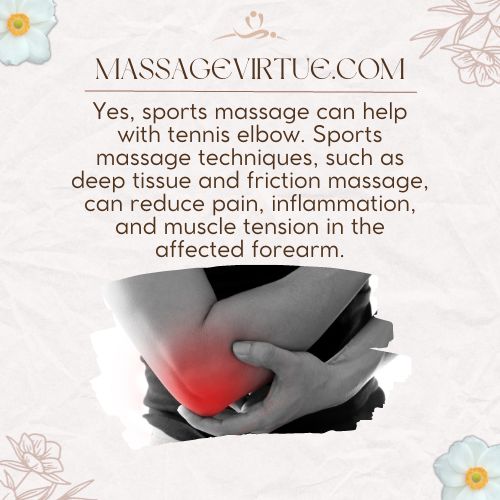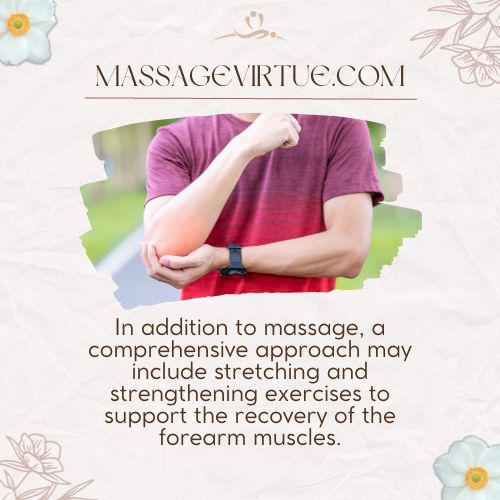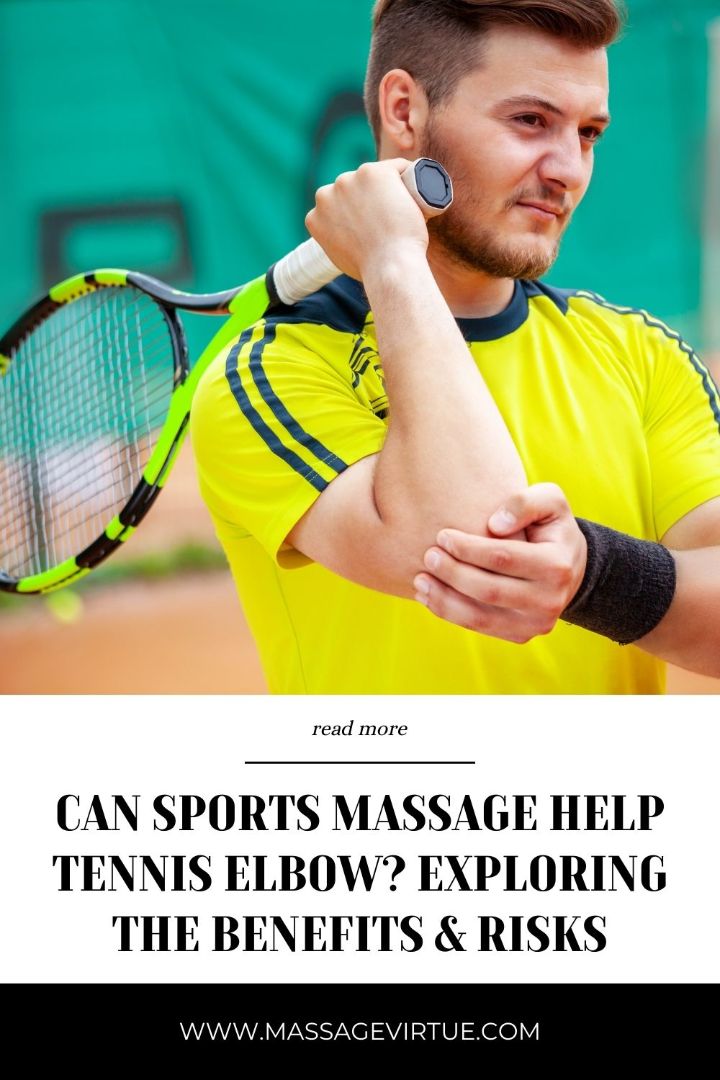Tennis elbow, clinically known as lateral epicondylitis, is a common overuse injury that plagues not only tennis players but also athletes, fitness enthusiasts, and anyone who repetitively strains their forearm muscles.
The pain and discomfort of tennis elbow can hinder your performance and quality of life.
But can sports massage come to the rescue?
In this article, we will explore whether sports massage can help alleviate the symptoms of tennis elbow, including its trigger points, treatment techniques, and the associated risks and benefits.
Can Sports Massage Help Tennis Elbow?
Yes, sports massage can help with tennis elbow. Sports massage techniques, such as deep tissue and friction massage, can reduce pain, inflammation, and muscle tension in the affected forearm.

It promotes blood flow, which aids in the healing process.
However, it’s crucial to consult a skilled therapist to ensure the massage is done correctly and effectively as part of a comprehensive treatment plan for tennis elbow.
Tennis Elbow Trigger Points
To understand how sports massage can aid in the treatment of tennis elbow, it’s essential to grasp the trigger points.
Lateral epicondylitis primarily affects the tendons in the forearm, causing pain and inflammation where these tendons attach to the lateral epicondyle, the bony bump on the outer part of the elbow.
The key trigger points for tennis elbow are these inflamed tendons.
How to Treat Tennis Elbow with Sports Massage?
Sports massage, particularly deep tissue massage, can be a valuable addition to your tennis elbow treatment plan. Here’s how it works:
1. Deep Tissue Massage
Deep tissue massage techniques target the affected area with firm pressure, promoting increased blood flow and oxygen to the injured tissues.
This can aid in the healing process, reduce inflammation, and release muscle tension.
2. Friction Massage
Friction massage focuses on the specific trigger points and tendons affected by tennis elbow. It aims to break down scar tissue, improve flexibility, and reduce pain.
By using friction massage, a skilled therapist can help release the tension in the affected tendons.
3. Stretching and Strengthening
In addition to massage, a comprehensive approach may include stretching and strengthening exercises to support the recovery of the forearm muscles.

A qualified sports massage therapist can provide guidance on these exercises.
Risks and Benefits of Sports Massage for Tennis Elbow
Let’s take a closer look at the risks and benefits of using sports massage for tennis elbow. We’ll present these in a tabular form for easy comparison:
| Benefit | Risks |
| Reduces pain and inflammation | Discomfort during treatment |
| Enhances blood circulation | Possible soreness afterward |
| Loosens tight muscles | Temporary skin redness |
| Breaks down scar tissue | In rare cases, aggravation of symptoms |
| Can complement other treatments | Costs may vary |
| Promotes relaxation | The quality of the therapist matters |
How to Find a Qualified Sports Massage Therapist for Tennis Elbow?
To find a qualified sports massage therapist for tennis elbow:
1. Ask for Recommendations: Seek recommendations from your physician, physical therapist, or friends who have received effective sports massage treatment.
2. Check Credentials: Ensure the therapist is certified and licensed in sports massage therapy.
3. Experience Matters: Look for therapists with experience in treating tennis elbow or sports-related injuries.
4. Interview Therapists: Have a conversation with potential therapists to discuss their approach, techniques, and your specific needs.
5. Read Reviews: Check online reviews and testimonials to gauge the therapist’s reputation.
6. Location: Choose a conveniently located therapist to make regular sessions more manageable.
7. Cost: Compare pricing, but prioritize skill and experience over cost.
8. Consult Your Physician: Consult your physician or physical therapist for recommendations and guidance in selecting a qualified therapist.
Conclusion
In conclusion, sports massage, when used as a part of a comprehensive treatment plan, can be a valuable ally in your battle against tennis elbow.
However, it’s crucial to consult with a qualified sports massage therapist who understands the nuances of treating lateral epicondylitis.
Their expertise, combined with the right techniques, can help you on the path to recovery and improved performance.
FAQs
What Massage is Best for Tennis Elbow?
A deep tissue massage is often the best choice for tennis elbow.
It involves applying firm pressure to the affected area, which can help reduce pain, improve blood flow, and release tension in the muscles and tendons.
Where Do You Massage Your Arm for Tennis Elbow?
For tennis elbow, focus your massage on the forearm. Specifically, target the area where the pain is located, near the outer part of the elbow.
Be gentle and precise, especially on the tender spots.
Can Sports Massage Help With Tendonitis?
Yes, sports massage can help with tendonitis. Sports massage techniques, like deep tissue and friction massage, can reduce inflammation, promote healing, and relieve pain associated with tendonitis.
What Pressure Point Relieves Tennis Elbow?
One pressure point that can relieve tennis elbow is called the “Lau Gong” point. It’s located in the fleshy part of the forearm, about two inches below the elbow crease.
Gently apply pressure to this point for relief, but it’s essential to do it carefully to avoid further irritation.


